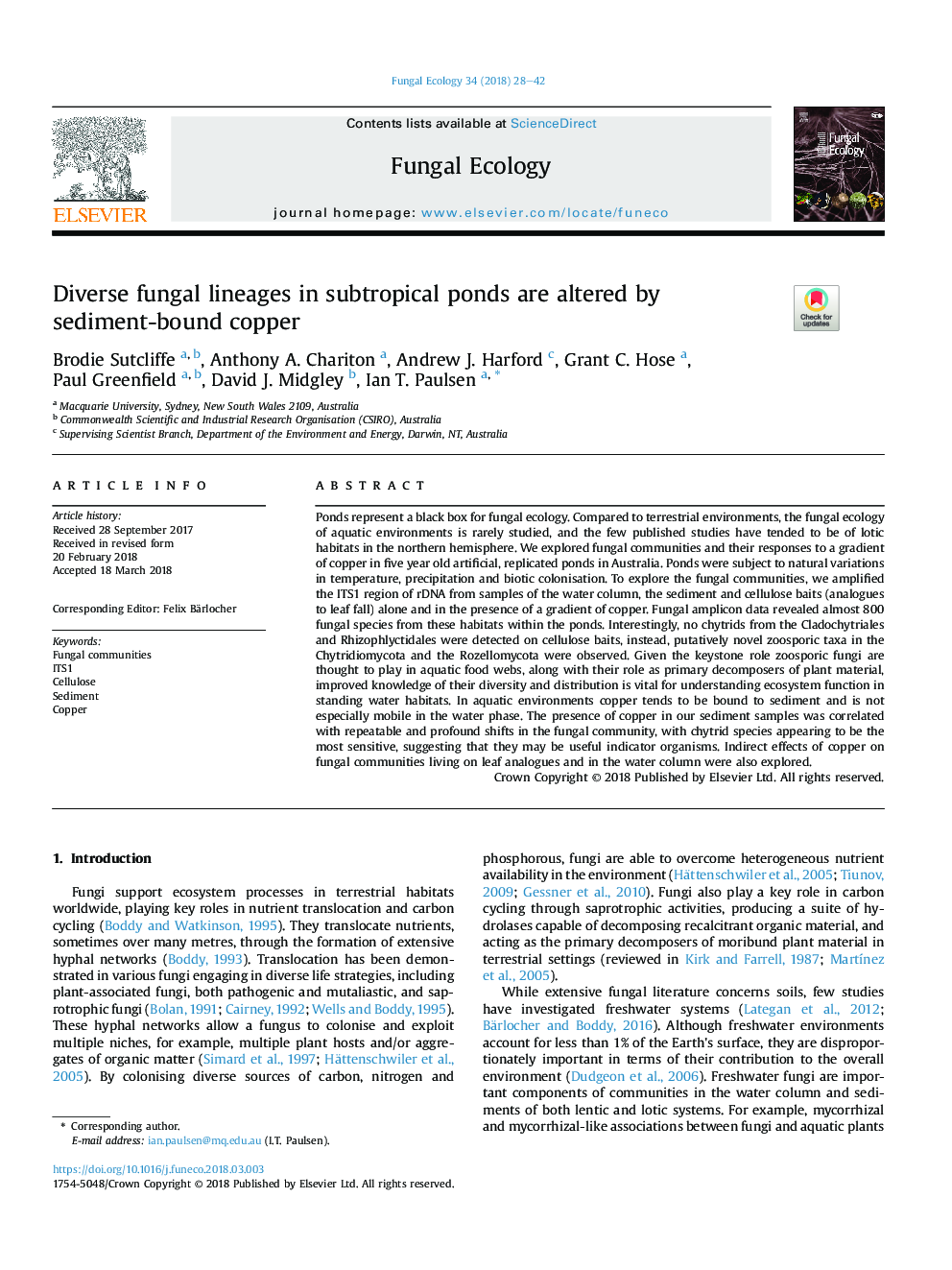| Article ID | Journal | Published Year | Pages | File Type |
|---|---|---|---|---|
| 8384210 | Fungal Ecology | 2018 | 15 Pages |
Abstract
Ponds represent a black box for fungal ecology. Compared to terrestrial environments, the fungal ecology of aquatic environments is rarely studied, and the few published studies have tended to be of lotic habitats in the northern hemisphere. We explored fungal communities and their responses to a gradient of copper in five year old artificial, replicated ponds in Australia. Ponds were subject to natural variations in temperature, precipitation and biotic colonisation. To explore the fungal communities, we amplified the ITS1 region of rDNA from samples of the water column, the sediment and cellulose baits (analogues to leaf fall) alone and in the presence of a gradient of copper. Fungal amplicon data revealed almost 800 fungal species from these habitats within the ponds. Interestingly, no chytrids from the Cladochytriales and Rhizophlyctidales were detected on cellulose baits, instead, putatively novel zoosporic taxa in the Chytridiomycota and the Rozellomycota were observed. Given the keystone role zoosporic fungi are thought to play in aquatic food webs, along with their role as primary decomposers of plant material, improved knowledge of their diversity and distribution is vital for understanding ecosystem function in standing water habitats. In aquatic environments copper tends to be bound to sediment and is not especially mobile in the water phase. The presence of copper in our sediment samples was correlated with repeatable and profound shifts in the fungal community, with chytrid species appearing to be the most sensitive, suggesting that they may be useful indicator organisms. Indirect effects of copper on fungal communities living on leaf analogues and in the water column were also explored.
Related Topics
Life Sciences
Agricultural and Biological Sciences
Ecology, Evolution, Behavior and Systematics
Authors
Brodie Sutcliffe, Anthony A. Chariton, Andrew J. Harford, Grant C. Hose, Paul Greenfield, David J. Midgley, Ian T. Paulsen,
